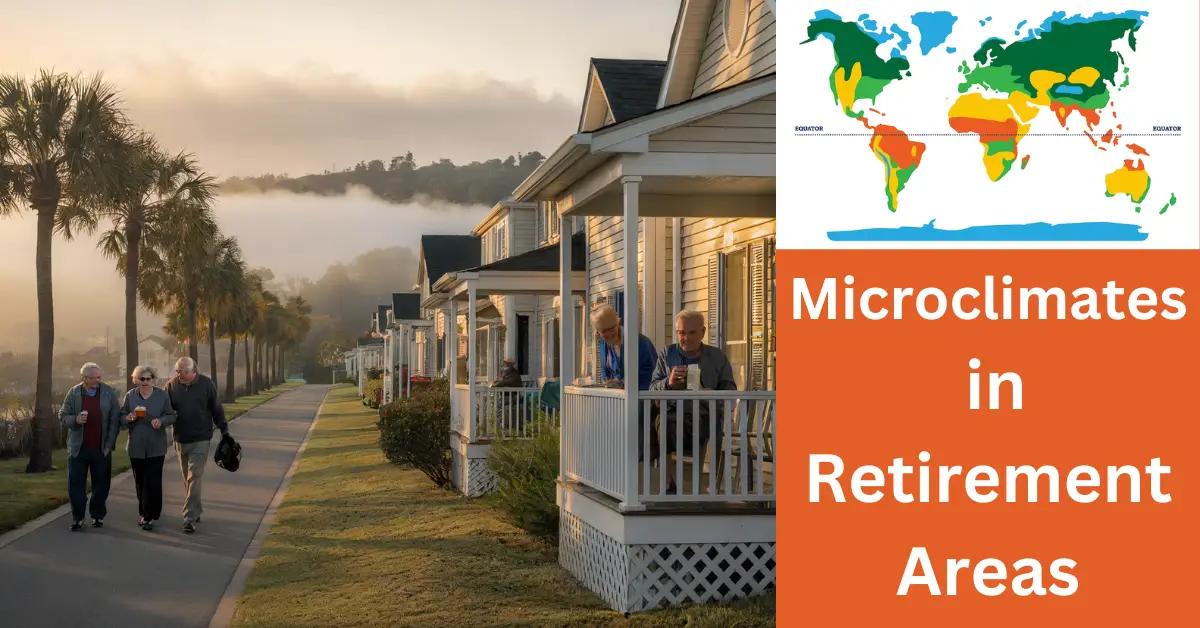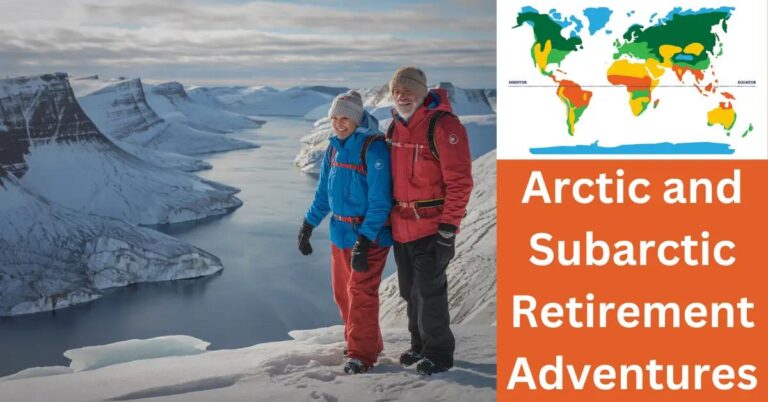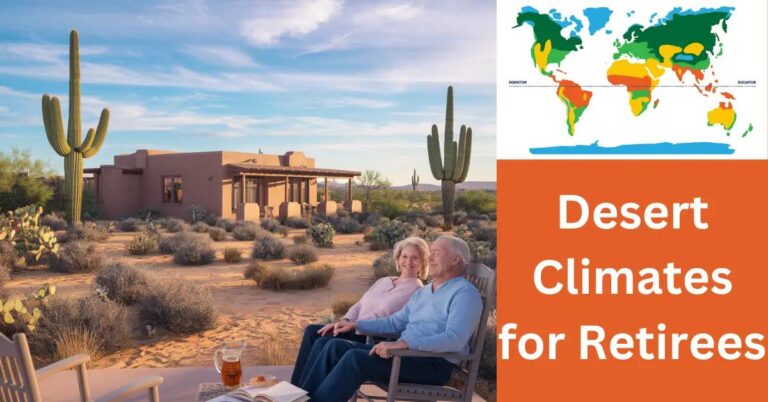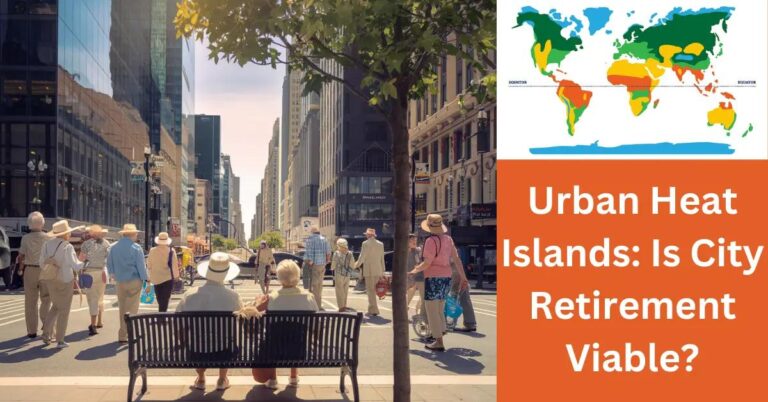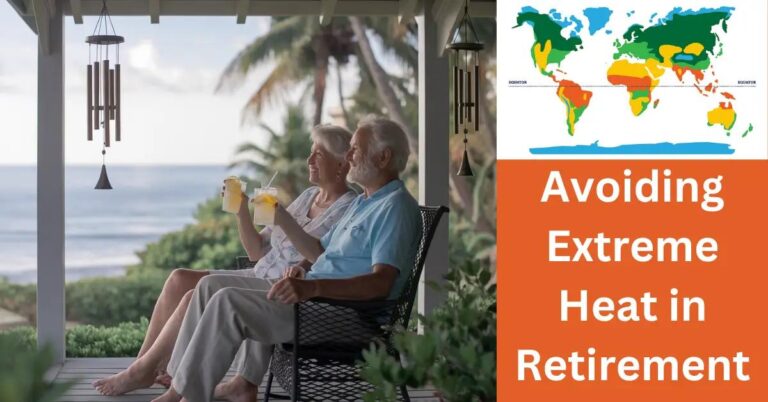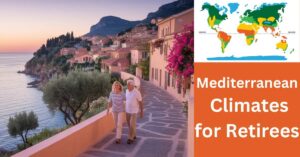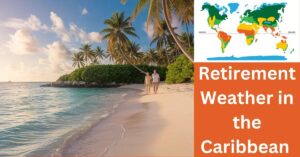TL;DR:
- Microclimates heavily influence retirees’ location choices for comfort and health.
- Ideal retirement climates are subjective, often mild, avoiding extreme heat/cold.
- Popular retirement states: California, Florida due to favorable climates, lack state income tax (e.g., Florida, Nevada).
- Microclimates impact health, routines, real estate, encouraging outdoor activities.
- Diverse climates improve health, offer lower costs, and enrich cultural lifestyles.
- Specific health needs may require certain microclimates like dry or humid conditions.
- Weather and climate affect retirement costs, heating/cooling bills, and real estate.
- Evaluating climate resilience and healthcare access is key for retirement planning.
- Understanding microclimates aids in achieving a comfortable, fulfilling retirement lifestyle.
Thinking about where to retire? Microclimates could be your secret weapon in finding the perfect spot. These small, varied climates affect everything from daily comfort to retirement costs. Imagine the freedom to choose between sunny mornings and cozy, shaded afternoons—all in reach without drastic moves. Let’s dig into how these microclimates can shape your retirement plans, preferences, and lifestyle to ensure a seamless transition into your golden years.
How do microclimates impact retirement decisions?
Understanding microclimates can shape where retirees choose to live. A microclimate is a small area with climate conditions different from nearby places. These small areas can offer a range of weather in retirement regions. So, retirees can find their perfect spot even within the same state or county. This diversity gives more choices to those seeking specific weather for comfort or health.
What is the best climate for retirement? The best climate depends on personal needs and health. Some prefer mild weather with no extreme heat or cold. In the USA, areas like Florida and California offer warm, dry climates cherished by many. But understanding the microclimates in retirement areas is key to knowing which spots best suit individual needs.
Microclimates can greatly affect health, daily routines, and hobbies. A retiree may find one area of a city sunny and another cool and foggy. This variety lets retirees choose a location perfect for outdoor activities, aiding healthy living. Microclimates also impact real estate decisions and property values, making them crucial for financial planning.
Geography significantly influences these choices. For instance, coastal areas might have milder winters than inland ones. Mountains provide cooler summers but possibly snowy winters. Being aware of these factors helps retirees decide where they will likely feel best. As climate can change moods and health, selecting a well-suited microclimate is vital for a fulfilling retirement. Understanding these nuances ensures better adjustments, leading to more joyful golden years.
What are the benefits of diverse climates for retirees?
Retirees can enjoy the benefits of diverse climates in many ways. Firstly, living in a varied climate can improve health. Experiencing different weather patterns can make life more enjoyable. You get the chance to be active all year round. Different climates offer a variety of outdoor activities like hiking or swimming.
But it’s not just about fun and fitness. Diverse climates can also be good for your finances. Areas with a mix of weather often have lower living costs. They might also offer better real estate deals, enhancing your retirement savings. For instance, if you choose a place where summers are popular but winters are quiet, you might save money on housing.
Cultural lifestyle is another benefit. Climate diversity brings unique traditions and events. Many places host festivals that celebrate the changing seasons. These events can enrich your life and connect you with the community. For example, in some parts of California, you can enjoy seasonal food festivals each year.
So, what about the best microclimates in retirement areas? Well, it depends on what you are looking for. In California, microclimates are really diverse. You can find mild coastal towns or crisp mountain air. Each offers something special for retirees.
Living in a place with many climates can make your retirement more fulfilling. You are not just picking a place to live; you are choosing a new lifestyle where weather changes bring new experiences. Retirement areas with climate diversity offer more than just a place to stay—they offer a vibrant way of life.
Which Climates Are Considered the Best for Retirees?
What is the best climate for retirement? The answer depends on preferences. Many retirees enjoy mild weather regions for retirement because they offer comfort. These places have warm days and cool nights. Ideal climates for retirees are neither too hot nor too cold.
Mild weather regions attract many retirees. Areas like California's coast and the Carolinas offer warmth with a breeze. These places present senior-friendly weather patterns, appealing to those seeking smooth temperatures year-round.
Some retirees prefer desert climates such as those in Arizona. Why? Because they enjoy sunny days and the minimal rain keeps arthritis pains at bay. For those who love the mountains, places like Colorado offer crisp air and breathtaking views.
When considering popular regions, state taxes play a role too. Some states, like Florida and Nevada, have no state income tax. Retirees find these areas economically friendly, helping them stretch their budgets. Learn how climate affects retirement costs.
Weather preferences vary among retirees. Some love the beach while others treasure the quiet of the forest. Active seniors might choose places with hiking trails and golf courses. Preferences often match outdoor interests and health needs.
Understanding the best climates helps retirees plan. Knowing what weather suits you ensures a happier, healthier, and more fulfilling retirement. This analysis builds trust in deciding where to spend your golden years.
What Are the Ideal Conditions for Seniors in Various Retirement Areas?
Ideal conditions for seniors include mild weather, clean air, and nearby healthcare. Seniors thrive in climates where seasons are gentle. This means no harsh winters or boiling summers. In areas with mild weather, older adults often find easier living and enhanced well-being.
Retiree-friendly climate data aids important decisions. Access to such data allows seniors to pick places that support health. For example, consistent temperatures and low pollution levels should guide retirement choices.
Certain microclimates in the USA, like in coastal California or parts of Florida, are known to support senior well-being. These regions often enjoy natural beauty and a moderate climate year-round. As seniors age, these elements can greatly affect their enjoyment and quality of life.
Regional microclimate variations can also cater to unique health needs. Some seniors may benefit from dryer conditions for arthritis, while others might need a humid environment for respiratory health. Microclimates offer a mix of weather that meets varied health requirements.
Choosing a climate for retirement involves weighing many factors. To maximize health and happiness, one should consider access to healthcare and social connections. Community and family support often outweigh the weather alone in promoting well-being.
For a deeper dive into how climate affects senior health, the [American Association of Retired Persons (AARP)] provides resources and insights. Their data helps seniors evaluate climate facts during retirement decisions. Understanding microclimates ensures that unique personal and health needs drive choices.
By aligning these factors, seniors can enjoy their golden years in comfort and health. Different microclimates offer unique opportunities to tailor an ideal retirement environment.
Where Can Retirees Find the Best Warm or Cold Weather for Retirement?
Where is the best place to retire with no humidity? The answer is often San Diego, California. With dry, mild weather, it offers comfort year-round. Choosing the right weather is vital for retirees. Some like the warm sun, while others seek crisp, cool air.
Let's look at sunny spots. Florida is famous. Cities like Miami and Orlando give you warmth and vibrant life. Arizona, with places like Phoenix, has lovely dry warmth. Dryness means less sweaty days, so joint pain is eased. On the other hand, if warmth isn't for you, consider cool locales. Many find peace in Vermont or Colorado. Snow here brings charm and serenity. Retirees can embrace skiing or quiet days by the fire. Cool weather can lower stress and blood pressure, too.
Your health and lifestyle needs guide this choice. Heat can boost mood but be weary of heat-related illnesses. Cooler spots might reduce allergy issues. Consider your hobbies and medical needs when choosing. Ask yourself: Do you prefer golf or hiking? Warm spots open to year-round outdoor activities. Cold areas promise cozy days in. Both have joys and challenges.
In the end, personal preference leads your choice. Warm climates offer vibrant, busy lifestyles. Cold climates bring peace and scenic beauty. Both need thought, meeting health needs and lifestyle wishes. Your perfect spot awaits with careful choosing.
What Factors Should Retirees Consider When Selecting Retirement Locations Based on Climate?
When picking your retirement spot, think about local weather first. Understanding weather patterns in retirement havens is key for day-to-day planning. Check for places with mild winters and low humidity if you dislike the cold or sticky air.
Microclimates in retirement areas within the USA vary greatly. A microclimate means different weather in close areas. Look for consistent microclimates where the weather doesn't change much, offering ease in planning. Places with stable climates often have less extreme weather and more predictable seasons.
If you enjoy seasonal activities, look for places with clear seasons. For outdoor lovers, areas that offer skiing in winter and hiking in fall will keep you active year-round. Seasonal variety influences hobbies and can ease adaptation to your new home.
Consider climate resilience, too. Climate change is real, and your retirement home should withstand it. Avoid places that face flooding or bad hurricanes. Look at climate-resilient locations to stay safe during storms or heatwaves.
Ask, "Where is the best place to retire in a cold climate?" Precision points to spots with beautiful winters, like Colorado or Vermont. These areas offer winter sports and cozy fireside nights. They show distinct seasons with balanced weather year-round.
Also, think about how your health interacts with climate over time. Some climates can improve health, while others might worsen it. Knowing local conditions helps maintain health and future well-being.
How Do Retirement Costs Correlate with Climate and Location?
When considering where to retire, both climate and cost are vital. One big question is: How does climate affect costs? In many places, weather plays a major role in living expenses. For example, heating bills skyrocket in cold places, while cooling costs rise in warmer areas. These expenses stack up, making climate-influenced costs a big deal.
Retirees often seek a balance between comfort and cost. Comfortable climates also often mean higher living costs due to demand. Popular places with mild weather can have steep housing prices or higher taxes. Think of areas like Southern California or Florida. Their sunny climates attract many, but living there is not cheap.
Taxes are another crucial factor. Places with favorable weather might have higher taxes, affecting your budget. States like Nevada or Texas offer tax breaks but may have different weather patterns. So, many retirees look for locations with a good mix of mild weather and low taxes.
Choosing the best place to retire involves weighing these factors carefully. Find an area where you feel most comfortable without breaking the bank. Always consider how these factors influence your budget and long-term satisfaction. Satisfying retiree living combines favorable climate and affordable living.
When selecting a retirement location, think about both your comfort and financial health. Focus on how different climates will impact your retirement lifestyle. Some areas might offer sunshine and beaches, but at a cost that doesn't fit your budget, while others might provide a more economical lifestyle with a pleasant climate.
Conclusion
Understanding microclimates can reshape your retirement journey, showing varied weather in one area. They influence how and where retirees migrate and adapt to new lifestyles. Different climates bring health and economic perks and shape cultural experiences. Mild climates offer comfort, while regional microclimates ensure good health. Whether you love warmth or a cooler breeze, each choice shapes your living cost and satisfaction. Consider these factors when picking the perfect spot for this new phase. Remember, the weather will impact your daily life, so choose wisely for the most fulfilling retirement.

